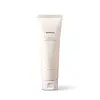What's inside
What's inside
 Key Ingredients
Key Ingredients

 Benefits
Benefits

 Concerns
Concerns

 Ingredients Side-by-side
Ingredients Side-by-side

Aloe Barbadensis Leaf Extract
EmollientGlycerin
HumectantWater
Skin ConditioningButylene Glycol
HumectantCaprylic/Capric Triglyceride
MaskingRosmarinus Officinalis Leaf Extract
AntimicrobialLavandula Angustifolia Extract
Skin Conditioning1,2-Hexanediol
Skin ConditioningPropanediol
SolventEthylhexylglycerin
Skin ConditioningVerbena Officinalis Extract
EmollientChamomilla Recutita Flower Extract
MaskingAcrylates/C10-30 Alkyl Acrylate Crosspolymer
Emulsion StabilisingArginine
MaskingPolyglyceryl-3 Methylglucose Distearate
EmulsifyingHydrolyzed Glycosaminoglycans
HumectantMaltodextrin
AbsorbentCeramide NP
Skin ConditioningTamarindus Indica Seed Polysaccharide
Skin ConditioningAloe Barbadensis Leaf Extract, Glycerin, Water, Butylene Glycol, Caprylic/Capric Triglyceride, Rosmarinus Officinalis Leaf Extract, Lavandula Angustifolia Extract, 1,2-Hexanediol, Propanediol, Ethylhexylglycerin, Verbena Officinalis Extract, Chamomilla Recutita Flower Extract, Acrylates/C10-30 Alkyl Acrylate Crosspolymer, Arginine, Polyglyceryl-3 Methylglucose Distearate, Hydrolyzed Glycosaminoglycans, Maltodextrin, Ceramide NP, Tamarindus Indica Seed Polysaccharide
Aloe Barbadensis Leaf Extract
EmollientGlycerin
HumectantPalmitic Acid
EmollientStearic Acid
CleansingLauric Acid
CleansingPotassium Hydroxide
BufferingWater
Skin ConditioningMyristic Acid
CleansingSodium Cocoamphoacetate
CleansingGlyceryl Stearate
EmollientSorbitan Olivate
EmulsifyingSodium Chloride
MaskingMelaleuca Alternifolia Leaf Extract
PerfumingAllantoin
Skin ConditioningPhenethyl Alcohol
MaskingCaprylyl Glycol
EmollientCitrus Aurantium Amara Leaf/Twig Oil
MaskingHelianthus Annuus Seed Oil
EmollientTocopherol
AntioxidantCitronellol
PerfumingCitrus Aurantium Bergamia Fruit Oil
MaskingPelargonium Graveolens Oil
MaskingArctium Lappa Root Extract
Skin ConditioningSymphytum Officinale Root Extract
Skin ConditioningMelaleuca Alternifolia Leaf Oil
AntioxidantGeraniol
PerfumingLimonene
PerfumingAloe Barbadensis Leaf Extract, Glycerin, Palmitic Acid, Stearic Acid, Lauric Acid, Potassium Hydroxide, Water, Myristic Acid, Sodium Cocoamphoacetate, Glyceryl Stearate, Sorbitan Olivate, Sodium Chloride, Melaleuca Alternifolia Leaf Extract, Allantoin, Phenethyl Alcohol, Caprylyl Glycol, Citrus Aurantium Amara Leaf/Twig Oil, Helianthus Annuus Seed Oil, Tocopherol, Citronellol, Citrus Aurantium Bergamia Fruit Oil, Pelargonium Graveolens Oil, Arctium Lappa Root Extract, Symphytum Officinale Root Extract, Melaleuca Alternifolia Leaf Oil, Geraniol, Limonene
Ingredients Explained
These ingredients are found in both products.
Ingredients higher up in an ingredient list are typically present in a larger amount.
Aloe Barbadensis Leaf Extract is an extract of the leaves of the aloe, Aloe barbadensis, Liliaceae.
Aloe is one of the most well-known natural soothing ingredients, and for good reason. It’s full of water and has a cooling, calming effect on the skin, especially when it’s sunburned, itchy, or irritated. Aloe also helps your skin stay hydrated and smooth by mimicking what healthy skin naturally produces. On top of that, it contains vitamins and nutrients that support skin recovery.
It doesn’t protect you from the sun, but it can help your skin bounce back after too much time in it.
Let’s get into the details:
Aloe contains antioxidant Vitamins A, C, and E, which help fight off free radicals (unstable molecules from things like pollution that can damage your skin).
It’s also rich in polysaccharides, which are natural sugars that help hydrate the skin by acting like the skin’s own moisturizing agents. These, along with other sugars like monosaccharides, help form a protective barrier that locks in moisture.
Aloe works as both a humectant and an emollient. That means it draws water into the skin (humectant) and helps trap it there (emollient), making it an effective natural moisturizer.
You’ll also find a mix of other skin-supporting ingredients in aloe, including folic acid, choline, calcium, amino acids, fatty acids, and even Vitamin B12.
Out of the 420+ species of aloe, Aloe barbadensis is the most widely used in skincare products thanks to its gentle yet effective properties.
There are over 420 species of aloe but Aloe Barbadensis is the most commonly used for topical products.
Learn more about Aloe Barbadensis Leaf ExtractGlycerin is already naturally found in your skin. It helps moisturize and protect your skin.
A study from 2016 found glycerin to be more effective as a humectant than AHAs and hyaluronic acid.
As a humectant, it helps the skin stay hydrated by pulling moisture to your skin. The low molecular weight of glycerin allows it to pull moisture into the deeper layers of your skin.
Hydrated skin improves your skin barrier; Your skin barrier helps protect against irritants and bacteria.
Glycerin has also been found to have antimicrobial and antiviral properties. Due to these properties, glycerin is often used in wound and burn treatments.
In cosmetics, glycerin is usually derived from plants such as soybean or palm. However, it can also be sourced from animals, such as tallow or animal fat.
This ingredient is organic, colorless, odorless, and non-toxic.
Glycerin is the name for this ingredient in American English. British English uses Glycerol/Glycerine.
Learn more about GlycerinWater. It's the most common cosmetic ingredient of all. You'll usually see it at the top of ingredient lists, meaning that it makes up the largest part of the product.
So why is it so popular? Water most often acts as a solvent - this means that it helps dissolve other ingredients into the formulation.
You'll also recognize water as that liquid we all need to stay alive. If you see this, drink a glass of water. Stay hydrated!
Learn more about Water